|
As we return to the daily routines of school and the busy holiday season that fills the time between Thanksgiving break and Christmas break, we often forget to slow down and really appreciate the good things in our lives. As I reflect on all the things I have to be thankful for, I realize just how much I am thankful for all my experiences here at DNH.
Here are just a few things that I am thankful for: Technology--I must say that technology has become a key part of my everyday life. My Christmas shopping is well underway thanks to online shopping and my life is somewhat organized thanks to Google Calendar! I love that I can schedule and share events on my calendars--That’s right! I have more than one!--with colleagues, speech students, and even my family. Helpers--We have so many amazing associates and support staff in our buildings. These “helpers” are doing great things by providing the support that many of our students need. DNH is lucky to have so many caring people in our buildings working to help our students achieve success. Be sure to let them know what a great asset they are to our students! Administration--The administration team has been so supportive of the TLC endeavor. I greatly appreciate how they involve us in decision making, allow us time for attending professional development opportunities, and encourage us to try new ideas. Not all TLC teams have this support! November--It’s hard to believe that this school year is already one-third complete! I am thankful for November as this time of year forces me to slow down just a bit, enjoy time with family and friends, and take time to refocus before jumping back into another busy season. I hope you have also enjoyed some time to recharge. Kids--I am thankful to not only have two happy, healthy boys of my own, but also to have so many wonderful kids here at DNH. I’m thankful that I have to opportunity to teach and learn with our students. It has been exciting to work with kids at all grade levels and in a variety of experiences. Family--As I spent Thanksgiving Day with my large and noisy family, I realized how appreciative I am of the time I get to spend with them. We always have a great time with lots of laughter. Not only am I thankful for my own family, I have found myself lucky to have such a great work family too! It truly is a blessing to be able to share and laugh with the people you work with. Understanding--With all the new challenges that have come our way this year, I appreciate how understanding everyone has been with the instructional coaches as we navigate through this first year, learning the coaching process, various teaching styles, and different grade level expectations. Your patience with us is greatly appreciated! Learning Experiences--I cannot express how thankful I am to have had so many wonderful opportunities to work with such great teachers and students. Each time I enter a classroom to observe, provide feedback, or co-teach, I learn something new. Take time to be thankful! -AS
8 Comments
We have much to be proud of at Dike-New Hartford. The community is aware of the success in volleyball, football, cross country, cheerleading, the high school play and in our music programs. Today I would like to share some of the excellent things I have seen happening recently in classrooms. Wednesday, November 2 the Mrs. Ostiguy’s 6th graders hosted a Cultural Fair within their soclal studies class periods. Groups of students created multi-media displays with artifacts to share a culture from around the world. This project demonstrated their knowledge of the eight elements of culture, their skills in organizing research in a clear, informative way, and showed how culture can bring a group of people together. Also that week, foreign exchange students from the high school also spoke about their cultures and their experiences at DNH. Some 7th graders are nearing completion of a trimester-long coding class. Recently Mrs. Seymour introduced Mrs. Hoffman’s students to Ozobots, small line-following robots. Students were very excited to see what tiny "toys" could do. “Hey, these ozobots are magic,” was the comment of one student. After exploring for a while, another student stated, “Hey, these colored squares are just coding.” Students set to work to using their coding skills to control the ozobot's movements.  Mr. Bennett’s government classes worked hard to administer a mock election in our district on Monday, November 7. High school students visited PK-5th grade classes leading activities to explain voter registration, election vocabulary and symbols, and some of the candidates. Elementary students also got to vote in voting booth, where students learned about the secrecy of ballots, voted for president and their favorite flavor of frootie candy. Even though their favorite candy flavor may have not won, students got to enjoy the flavor of the majority--very understandable explanation of a democracy. The mock election was a great learning opportunity for all. These are just a few of the excellent classroom happenings here at Dike-New Hartford. I hope to be able to share others soon.
DE Today, the middle school staff introduced the concept of growth mindset to their students grades 5-8. A couple weeks ago, students took a growth mindset survey, but they were not told what it was for or given their results immediately. This morning, students received their results and were then asked to head to the gym for an assembly without further explanation. Once there, they were introduced to what growth vs. fixed mindset actually means, Mrs. Seymour gave them real life examples of what growth mindset looks like, and they were able to watch a video by Trevor Ragan on the idea of being a "learning machine." After the video, students broke into groups and went through three rotations in which they completed different growth mindset activities. At one station, students talked about the importance of setting goals and following through with them, even when things get tough. They colored a motivation quote to stick on the inside of their computer lids so that it will always be there with them, and they played mentally and physically challenging games that required a bit of productive struggle to complete. One game, "Do as I say, not as I do," required students to do just that. They had to listen to the speaker, repeat what was said, and complete an action. As you can imagine, it was a bit of a challenge, but they began to get the hang of it after a bit. Once they were getting better at it, they would change it up and make it a little bit more difficult by adding another element, such as listening to the speaker, repeating what was said, but doing the opposite. In another group, students listened to two stories by Peter Reynolds revolving around growth mindset, The Dot, and Ish, They discussed how these connected and the themes of the books, then they made posters for around the building to keep the message of growth mindset present throughout the school. The final rotation was a mini-research projects of sorts. Students picked an inspirational quote from around the room then had to do some research to find out who said it, what struggles they faced, and how this person was someone who had a growth mindset. They were asked to describe this persons successes and failures and share how their journey is an example of growth and productive struggle. They then watched a couple clips that explained the brain science behind growth mindset, and described the amazingness of our growing, always learning, malleable brains. Overall, it was a wonderful morning of learning, and we are looking forward to seeing where growth mindset takes us next! For more information on what growth mindset it, visit our growth mindset page on the website. -AB 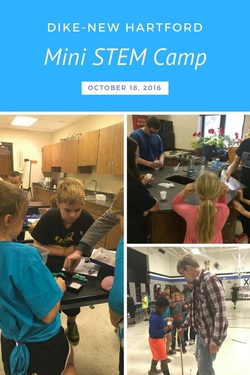
STEM is a current buzz term in education. It stands for Science, Technology, Engineering, and Mathematics. STEM is important because we need our students to think like scientists, technologists, engineers, and mathematicians. The complex thinking skills needed to interpret and solve real world problems are critical for the success of our learners and the progress of our nation. Many industries are investing in STEM education and providing grants to schools to implement programs developing these necessary skills in our students. As the district's technology integrationist, I work to help teachers find, learn, and use resources and tools that empower student learning. Technology just for technology's sake is not enough. We strive to create learning opportunities that stretch students' conceptual understanding, foster deep thinking and reasoning, and provide opportunities for creatively constructing knowledge. STEM education helps us achieve these goals.
Here are just a few STEM initiatives being implemented at Dike-New Hartford.
At the beginning of the year, we introduced you to the role of Instructional Coaches. However, Instructional Coaches are only one part of the TLC Model that has been developed at Dike-New Hartford. In addition to Instructional Coaches, we have Model Teachers and Mentor Teachers. Model teachers are full-time teachers who support other teachers and work collaboratively with instructional coaches to implement research-based instructional strategies, professional development, and peer coaching. Model teachers will test out new teaching strategies in their classrooms and have the opportunity to provide examples of exemplary practice through modeling, co-teaching, and collaborating with teachers in the implementation of scientifically researched instructional strategies. In addition, model teachers welcome observations from other teachers. Over the next several weeks, we will introduce you to the model teachers and share a little about the learning that is happening in their classrooms. Mr. Ryan Mitchell, High School Art Mr. Mitchell is currently working on developing a writing rubric to use with his art classes, teaching students to self-assess their own artwork, and implementing the new art standards. Some of Mr. Mitchell’s strengths are classroom management, creative problem-solving, and work ethic. Outside of school, Mr. Mitchell enjoys cars, guitars, art and games. Mrs. Chelsie Slaba, High School Science Mrs. Slaba is currently working on probing for understanding, infusing technology, and teaching through life experiences. In addition, she is working to plan more labs for Chemistry and using the ASSIST method with Physical Science. You can also find the Advanced Chemistry students doing research for Landus Coop. Some of Mrs. Slaba’s strengths include questioning and teaching students HOW to know the answer. In her free time, Mrs. Slaba enjoys gardening, photography, late muzzleloader hunting, and shooting archery league. Every summer she goes on a high adventure trip for several days with her best friend to explore a new place, doing all the science things along the way. -AS
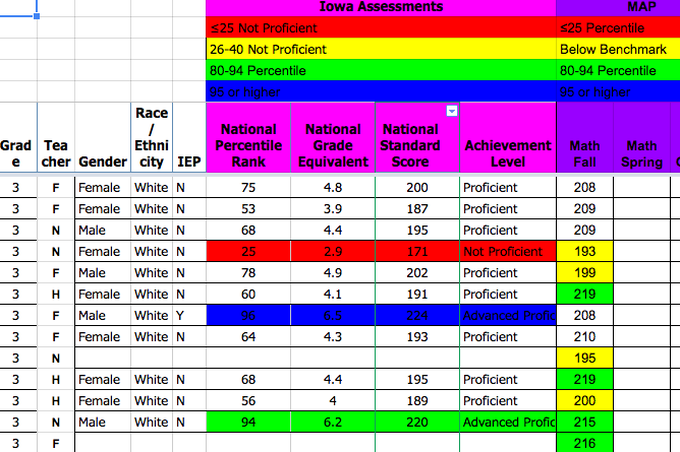 The beginning of a school year is full of excitement, expectations and new routines. Teachers are not only eager to know about their students' personalities and interests, they must also determine students’ strengths and weaknesses with core skills. One way DNH staff monitors these skills is by using the NWEA Measures of Academic Progress(MAP) test. Recently the instructional coaches worked with the fourth grade team to dive into student data. We not only waded through MAP results, but also FAST and Iowa Assessment data. After much trial and error, a document was created consolidating all data in a format the teachers feel will be helpful making instructional decisions. It’s kind of a color-coded nautical chart, guiding teachers through an overwhelming sea of numbers. A portion of the reading data is shown. The instructional coaches are grateful the fourth grade teachers were willing to "jump into the deep-end" and troubleshoot a process to study this data. The insights gathered that day will help make the process smoother for other teams, allowing them to dig deeper into their student data and better meet the needs of learners. "The most valuable resource that all teachers have is each other. Without collaboration our growth is limited to our own perspectives." - Robert John Meehan DE "Our very lives are fashioned by choice.
First we make choices. Then our choices make us." - Anne Frank It's that time of year when teacher burnout is becoming a reality for some of us. Balancing school, work, home, and all other outside activities can become daunting, and making time for it all may seem impossible somedays. Our plates are starting to overflow, and our minds are starting to take on the toll. We all go through this at some point in the year, but edutopia.org gives 12 choices we can make to help ease the burden of burnout and keep us on track through the trying parts of the year. According to article author Vicki Davis, making some or all of these 12 choices can help even the most tired and burnt out teacher recover and continue on strong. Making these choices may not be an easy thing to do, as we become accustomed to our day to day routines and choices, but these simple changes can help us avoid the crash that can occur when we are overwhelmed and overloaded by life. The first three choices given are: "Choice #1: Choose to Be Happy First, happiness is a choice. Choose to be the first one to smile at everybody you meet. Choose to greet your students by name. Use happy triggers to boost your mood when you get upset. I have a Pinterest Board called Happy Thoughts and another called Things That Make Me Laugh. The "Atta Girl" folder in my desk holds nice notes. Choice #2: Choose to Disconnect We are making a dumb use of our smartphones. Instead of freeing us up to go anywhere anytime, they've tethered us to a hamster wheel. Usually, I check email twice a day. I deleted my school email off my smartphone after several evenings because of an angry email. (We all get them.) Unplug once a week. Be a human being, not a human doing. Choice #3: Choose to Be Mindful Mindfulness is being called society’s next wonder drug. Some meditate or practice yoga -- I pray every morning at 5 AM for at least 20 minutes. I find a sense of peace that centers me upon what is important." This blog post includes 12 choices that can help us stay strong through the trying times. whether you make one choice, 4 choices, or take on all 12 choices, any change in routine may be able to help refresh and recharge your batteries. No matter which decisions you make, be sure to give yourself time to relax, find a way to reduce your stress that works for you, and don't worry - every little thing is gonna be alright! - AB 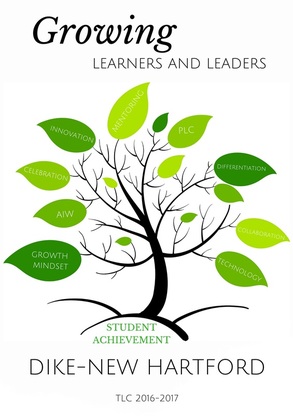 As we reflect on the first six weeks of school, all the instructional coaches are asking, “Where did those first six weeks go?” We have been busy meeting teachers, working with classrooms, and attending workshops that will help us be effective in our new roles at Dike-New Hartford. We decided last year that instead of calling our program TLC (Teacher Leadership and Compensation), we would name it Growing Learners and Leaders. Our mission is to empower teachers with resources and strategies that will help them meet their goals of improving student achievement. Our students are the reason for our school district and therefore at the center of Growing Learners and Leaders. Our Growing Learners and Leaders program includes involving our teachers in coaching cycles. This sounds a bit intimidating at first, but at the core it is sitting down with individual or groups of teachers and having discussions about the core standards and learning targets they are desiring their students to achieve. Once a teacher defines a clear goal for learning, we look at student data and work together to design instruction that will best meet the needs of all students. Teachers may ask a coach to observe and give feedback. They may also ask a coach or another teacher to model a strategy with the class. After visiting several times and evaluating assessments, we decide our next steps. That may lead right into another coaching cycle, or the teacher may decide to put the resources and strategies into practice to continue monitoring learning. We were uncertain if our teachers were ready for coaching cycles so early in the school year. When we asked who might be interested in starting, we had over a dozen who wanted to get going immediately. We’ve worked with teachers at every level and building. This is a testament to our district. Our teachers work really hard to help our children become the best learners and leaders they can be. Coaching cycles will help them focus that energy effectively. As we move forward, we look forward to working with all teachers. As we have discovered, everyone can benefit from coaching cycles because all of our students have the need to learn. ~JS If you are like me, you have a love-hate relationship with Homecoming.
I love the passion and excitement I see in students during Homecoming week. I love seeing the high school students spend two frantic hours on Sunday evening decorating halls. I love seeing the junior high students celebrate their dress up day winners. I love hearing the elementary students cheering loud and proud at the pep assembly. I love seeing the cheerleaders and football players dressed up in their blue and white, proud to be Wolverines. I love seeing the Homecoming Court and their parents announced before the game. There’s just so much about Homecoming week to be excited about and love! But that leads me to the hate part of my relationship with Homecoming. It seems like we are constantly trying to redirect students to focus on the lesson we are teaching. With all the excitement of Homecoming activities, how do we as teachers accomplish anything academic this week? So how do we take this passion--this hunger--that students have during Homecoming week and build on this throughout the rest of the year? Let’s take some of the concepts that make Homecoming exciting and bring them into our classrooms! Here are 5 strategies that you can use with your students for an exciting year: 5. Competition--Students get excited about creating the best poster or having the best hall or door decorations, so incorporate some healthy competition into your classroom. Game-based learning is on the rise. Check out these game-based learning resources on edutopia. You can also use games like Jeopardy or Kahoot for pre-assessment, formative assessment, or review. (A small prize is nice but not necessary!) 4. Fun--Dress Up Days are all about FUN! And who doesn’t like to have some fun? Use student interests to connect to your curriculum. Take time to do something out of the ordinary. Laugh. Create fun and interesting bulletin boards and activities. Here are a few that I have already seen around the district: Homeworkopoly (Check out Terri Brown’s board!), painted ceiling tiles (Check out the HS art room!), and relaxing reading corners. 3. Collaboration--Have you ever noticed how when we have the whole student body cheering at the pep assembly, it just seems so much more exciting? Bring the collaboration to your classroom. Consider co-teaching a lesson or unit. Plan and teach a cross-curricular unit that brings in more resources and more voices. Don’t forget...instructional coaches are available to collaborate with too! 2. Victory--There’s just something about winning...especially at Homecoming! In teaching, when students learn, we win. So, what goals are we setting for students? Are we helping ALL students reach the standards that we ask of them? Differentiating is a great way to ensure that all students are getting what they need in order to learn. Check out our differentiation page as we add more ideas throughout the year. Instructional coaches or model teachers can also help you with ideas for differentiating for your students. 1. Celebration--There’s nothing better than celebrating a Homecoming victory than with a dance! The dance is the final event of a busy, exciting week. So, we celebrate! Be sure to celebrate victories--big or small-- in your classroom. Recognize the success students are having as they are victorious in achieving their goals. Give stickers or prizes. Bring treats. Have a party. Dance! -AS When sharing about my new job, this is the question I am most commonly asked. Many people, including myself, at first, have never heard of an instructional coach and have no idea what he or she might do. My husband still teases, “Where’s your whistle and clipboard, Coach?” While I am in no way an expert, I would like to share what I have learned so far and mention some of our team’s first steps. Part of the Dike-New Hartford’s Teacher Leadership and Compensation (TLC) plan was to create four new instructional coaching positions. Current staff members were hired as instructional coaches in the areas of technology (Joanna Seymour), literacy (Amanda Bonjour), mathematics (Diane Eilderts), and mentoring/collaboration (Amy Seitz). The coaching team was no longer assigned to a classroom or a particular group of students. Instead, we are free to work at all levels, preschool through grade 12, to support teachers and improve student learning. Trainings this spring and summer provided us tools to help support our teachers and improve student learning. To support our staff, we will:
We instructional coaches will NOT:
Starting coaching this fall, it has been exciting to observe many grade levels, and witness strengths of different teachers and students. We coaches have a goal to make it to all classrooms during the next few weeks. We are eager to visit with students we haven’t met yet and find ways to be supportive of staff needs. DE |
DNH CoachesBurnette Dove, Literacy Archives
May 2017
Categories |
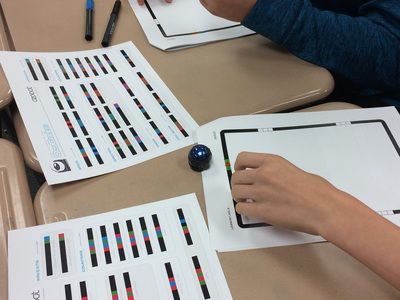
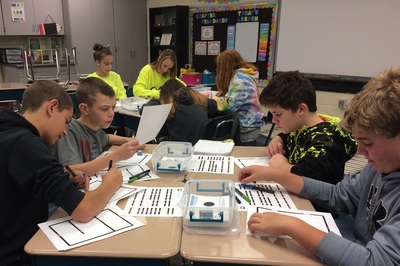
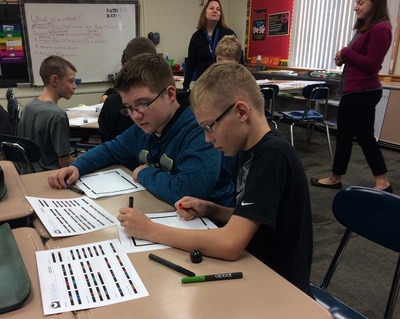
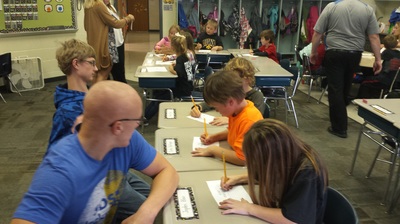
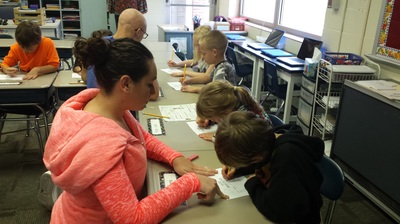
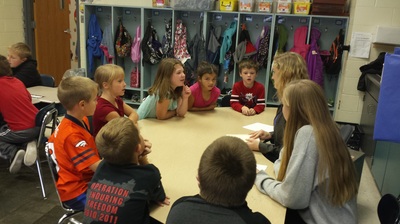
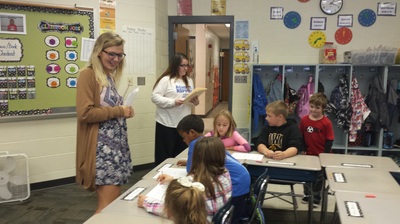
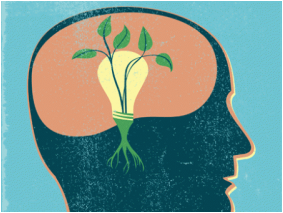
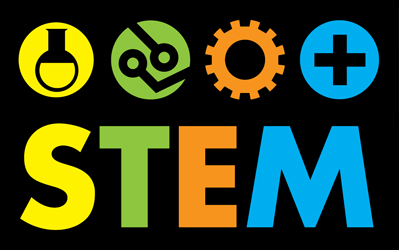

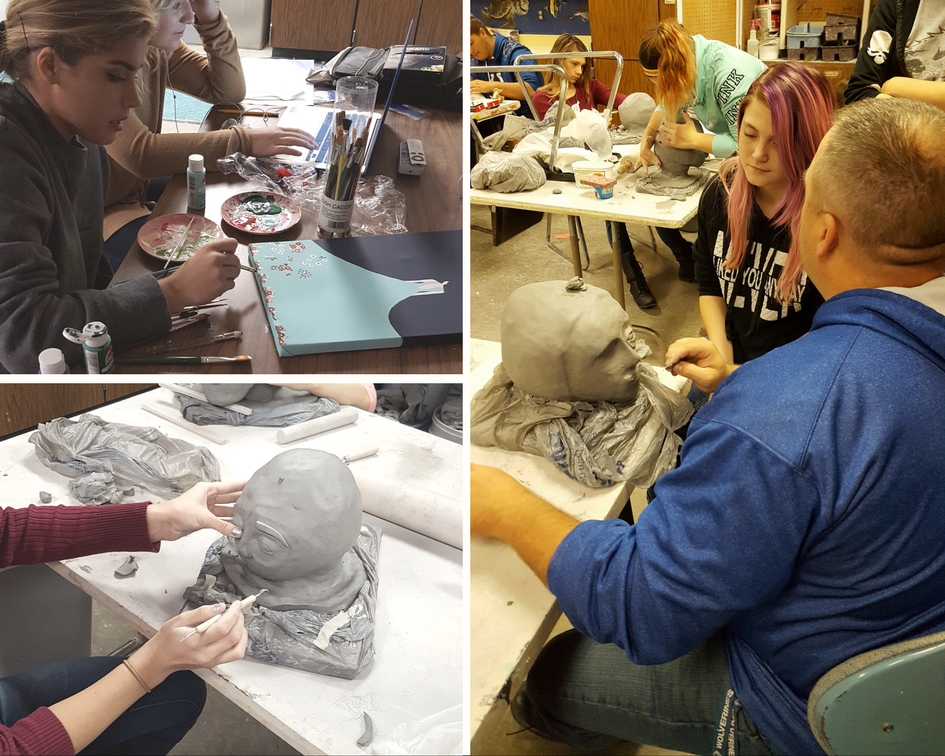
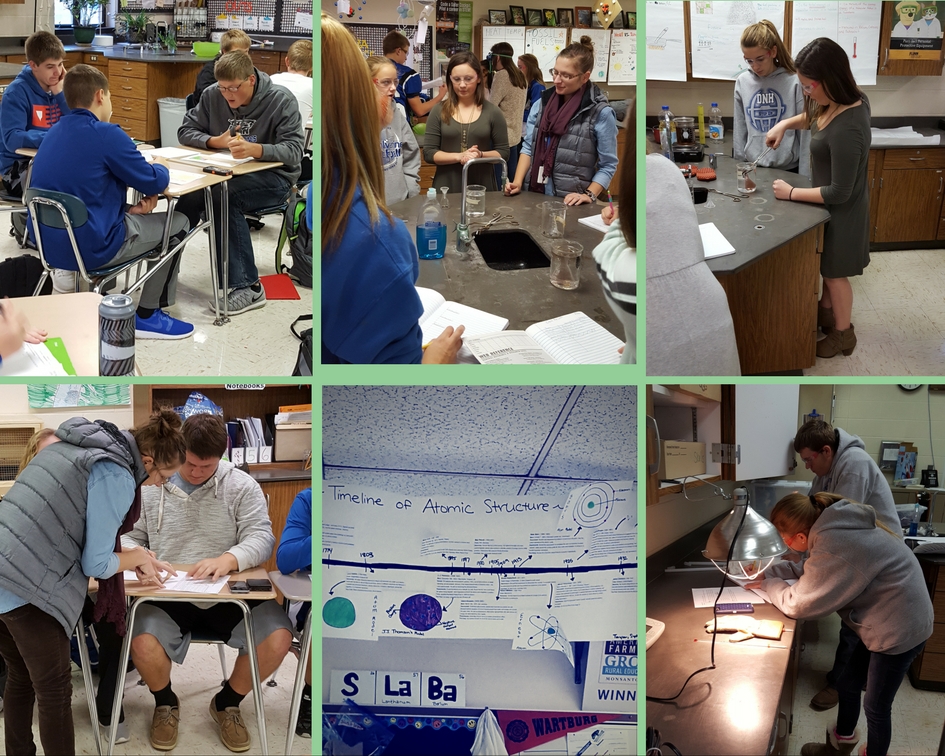
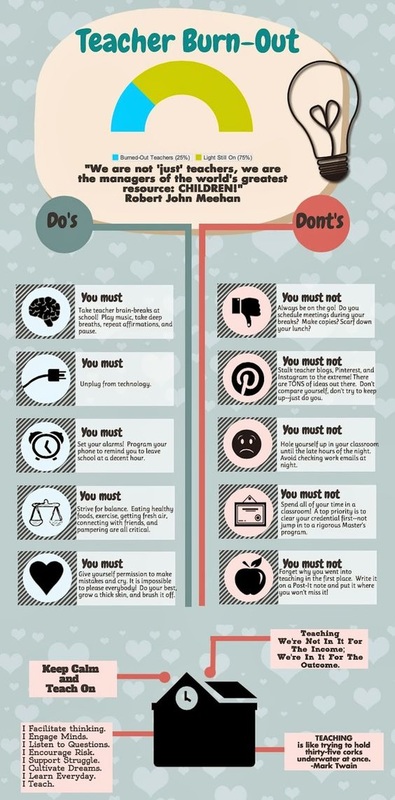

 RSS Feed
RSS Feed
